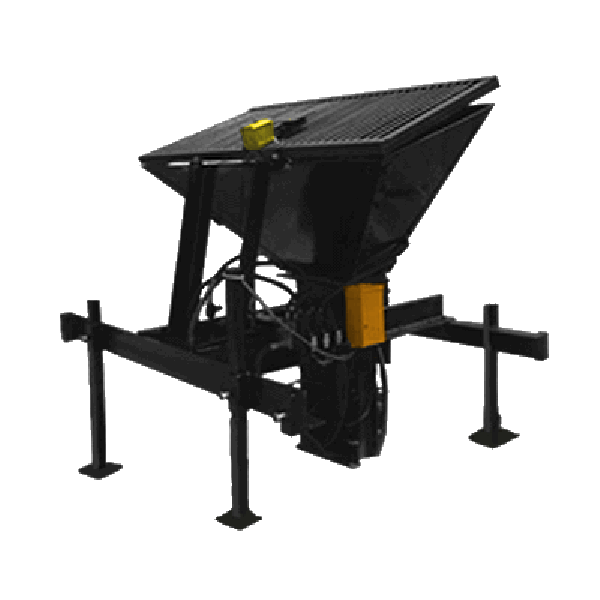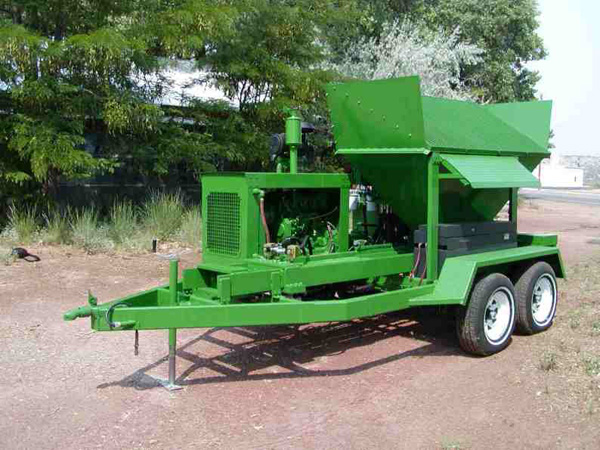
“Vertical Block Press Pros
– Uniform block dimensions in wall sizes
– Simple adaptive mold changes
– Able to produce interlocking block
– Fewer block imperfections
– Produce quality block
– Produce uniformly dense block
Vertical Block Press Cons
– Irregular block thickness
– Require mortar to level
– More expensive to build
– Much larger structure to withstand pressures
– Higher complexity of components
– Higher center of gravity (less stable on roads)
– Higher smaller hopper
Why the Difference
There were five major issues that drove the conversion from the vertical press to the horizontal.
1 Feeding the mold with a uniform amount of materials.
2 The structure required to withstand the tonnage developed during the press cycle.
3 The height requirements of both the hopper and the ejected block.
4. Costs of the components.
5. Complexity of design and components.

A vertical press presses from the top or bottom of the block. If the block is 10 x 14 then the press area is on the 10 x 14 side, 140 sq in at 1500psi is 105 tons of force on the press structure.
The resulting block is perfectly 10 x 14 but the thickness is not perfect, in order to maintain a uniformly thick block and uniform density between blocks the soils in each block would have to be identical in both volume of soil and moisture content, not possible. This irregularity is the same as that experienced by cast adobe and the cure is a mortar bed to level the blocks. That adds another expense as well as requiring a higher level of skill in the building process. However you can build either 10″ or 14″ walls.
A horizontal press presses the block from the 4 x 14 end. This is 56 sq in at 1500 psi = 42 tons of force on the press structure.
With horizontal presses you can dry stack a wall about 4 times faster and with much less cost using basic skilled labor. You can, with 10 people on site and the PDA-480-14dp produce and build (the walls) the equivalent of a 1200 square foot home a day. You can’t do that with a mortared system in 4 days because the mortar has to dry.”
Read the full article at the source: Adobe Machine.com
Main page Adobe Machine.com
Image source 1: Makezine

I’m fascinated by the various CEB machines and block making processes. My favorite at this time is Vela Creations method using mortared blocks and cast in place posts: https://naturalbuildingblog.siterubix.com/another-ceb-wall-method/
There are pros and cons to every system. Even though Vela Creations method requires mortar and slightly more skill, the end result looks very much like a brick wall, which is highly appealing. Speed isn’t everything…
The Auroville presses are fairly precise, only requiring 1/8″ mortar or less. Basically just a glue to seat the blocks.
Thanks for the info. What about your supplier? Auroville presses are fairly expensive.
I haven’t been able to go by there, but hopefully, I will be going to the city tomorrow, and I can take photos and get some info on the machine. The last time I went, the place was closed (for a holiday), so I was unable to get any info.